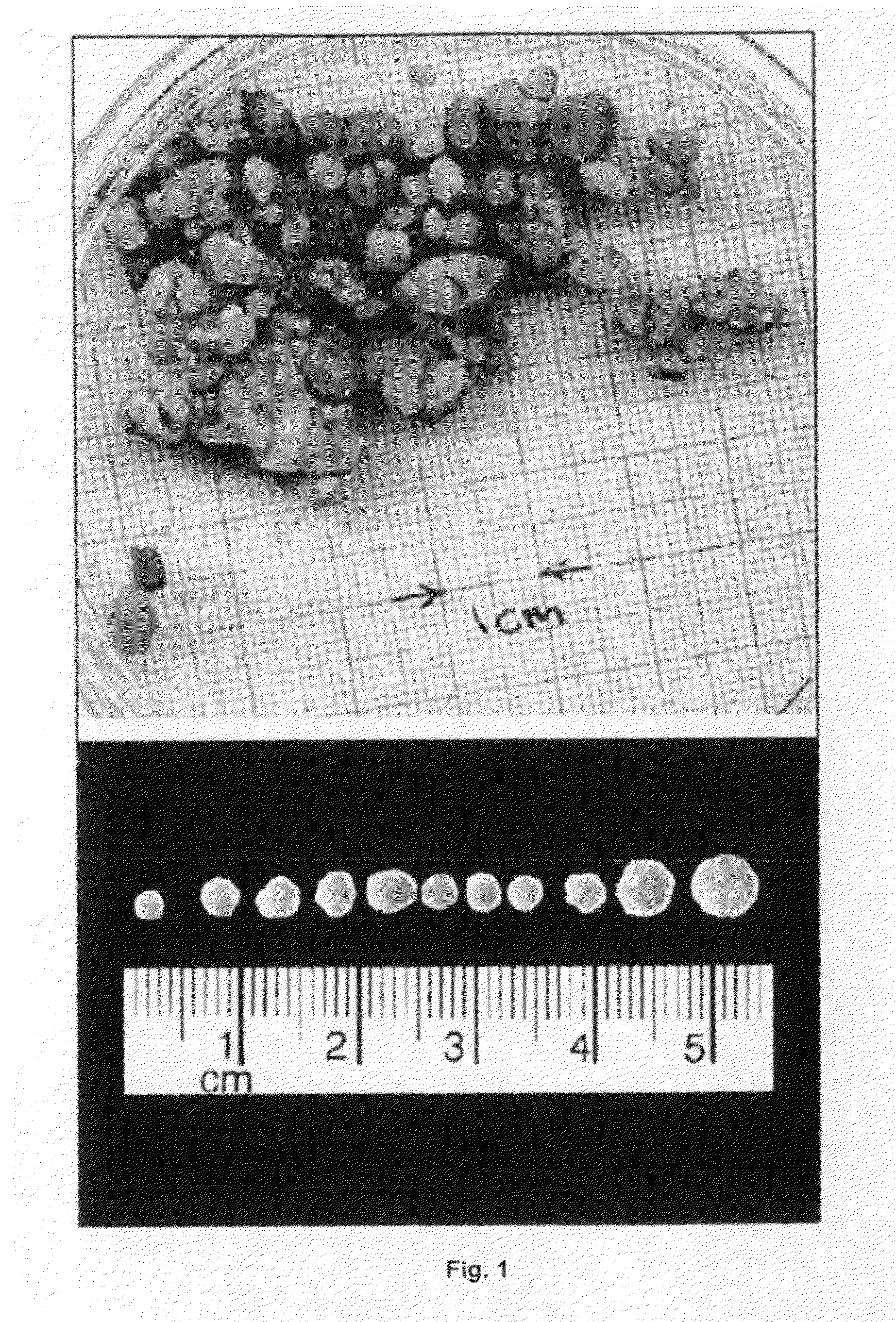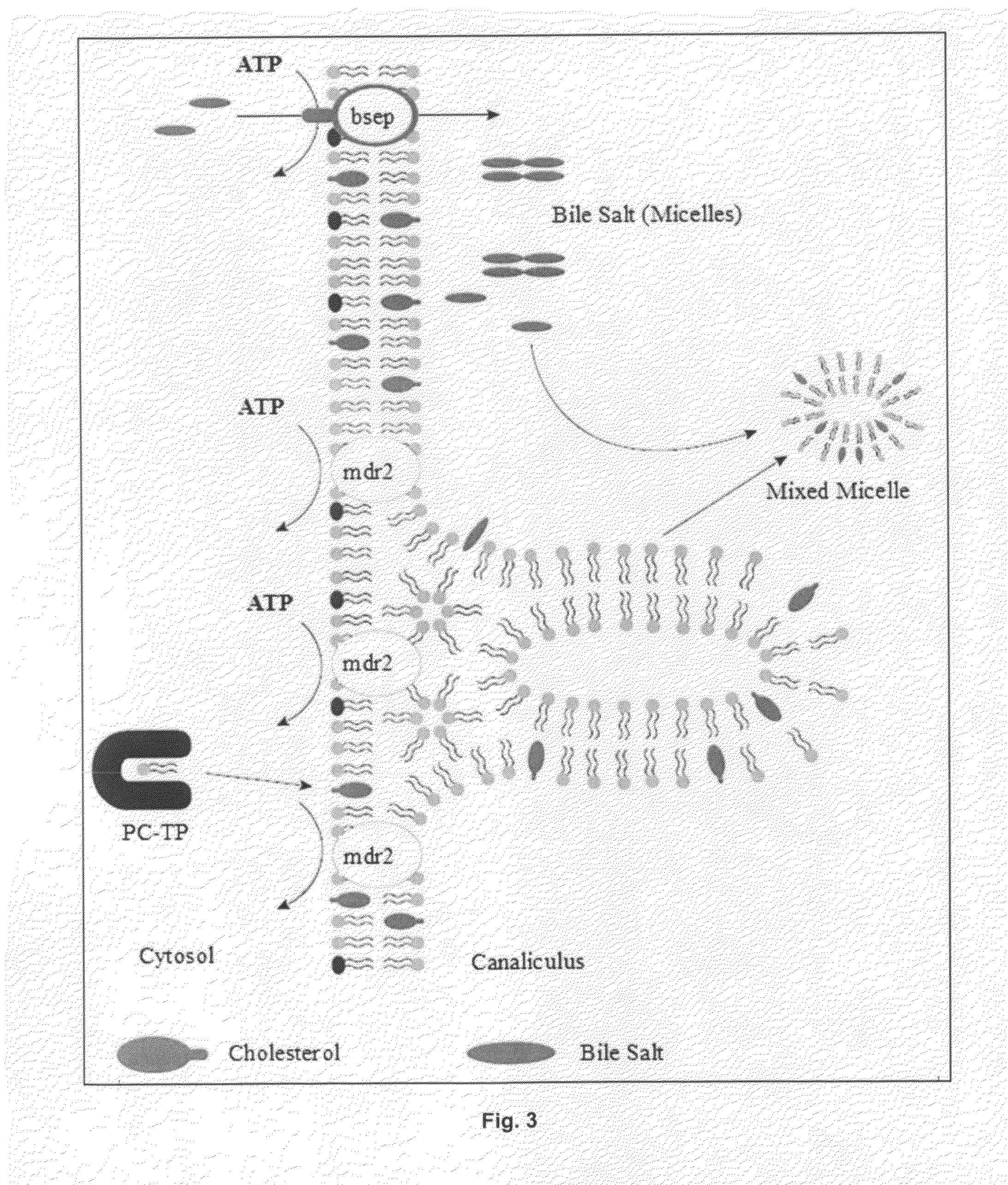Nanoveson™: treatment, biomarkers and diagnostic tests for liver diseases and comorbid diseases
- Summary
- Abstract
- Description
- Claims
- Application Information
AI Technical Summary
Benefits of technology
Problems solved by technology
Method used
Image
Examples
examples
[0360]In light of the fact that the active ingredients in Nanoveson™ therapy have a long history of safety and their sale is not restricted, since they are not new molecular compounds, Nanoveson™, LLC took the liberty to collect limited samples for analysis. It should be stressed that results discussed here are highly preliminary. The low number of samples “two” is emphasized. Nanoveson™, LLC engaged a major university laboratory, with comprehensive experience in testing phospholipids present in fecal matter, to conduct testing on SAMMV samples produced by Nanoveson™ therapy. The limited lipid testing done thus far confirms the primary and important aspects of Nanoveson™ therapy hypothesis.
[0361]The following is a summary of the methods utilized for extraction and quantification of phospholipids and fatty acid fractions from SAMMV samples by the lab. The SAMMV samples were homogenized in 0.9% NaCl in water; one volume of sample (by weight), to 9 volumes of saline (...
example
Samples #3 and #4
[0373]Additional samples were also analyzed to confirm intestinal vs. biliary formation of the SAMMVs. Sample #3 consisted of ˜7.5 grams of SAMMVs that were relatively large dense SAMMVs with individual SAMMVs of 0.5 cm to 1.5 cm diameter sizes. Sample #4 represented the ˜1 gram core of a large ˜1.5 cm SAMMV from Sample #3 SAMMVs. Laboratory analysis revealed that the 18:3n3 fatty acids in the 10 PM solution were present in equal quantities in both Sample#3 and Sample#4, representing exactly 11.1 percent of the total free fatty acids in each sample. It should be noted that FFA represented ˜22.5% of both samples. It should noted that if the Sample#4 core was formed in the liver or biliary tract it would be expected to have no FFA and virtually no 18:3n3 fatty acids that were in the 10 PM solution. Very small amounts of 18:3n3 FFA from PL broken down by lipase would be possible. The large amount of 18:3n3 and consistency in the #4 core with #3 indicate intestinal form...
PUM
| Property | Measurement | Unit |
|---|---|---|
| Time | aaaaa | aaaaa |
| Time | aaaaa | aaaaa |
| Time | aaaaa | aaaaa |
Abstract
Description
Claims
Application Information
 Login to View More
Login to View More - R&D
- Intellectual Property
- Life Sciences
- Materials
- Tech Scout
- Unparalleled Data Quality
- Higher Quality Content
- 60% Fewer Hallucinations
Browse by: Latest US Patents, China's latest patents, Technical Efficacy Thesaurus, Application Domain, Technology Topic, Popular Technical Reports.
© 2025 PatSnap. All rights reserved.Legal|Privacy policy|Modern Slavery Act Transparency Statement|Sitemap|About US| Contact US: help@patsnap.com



